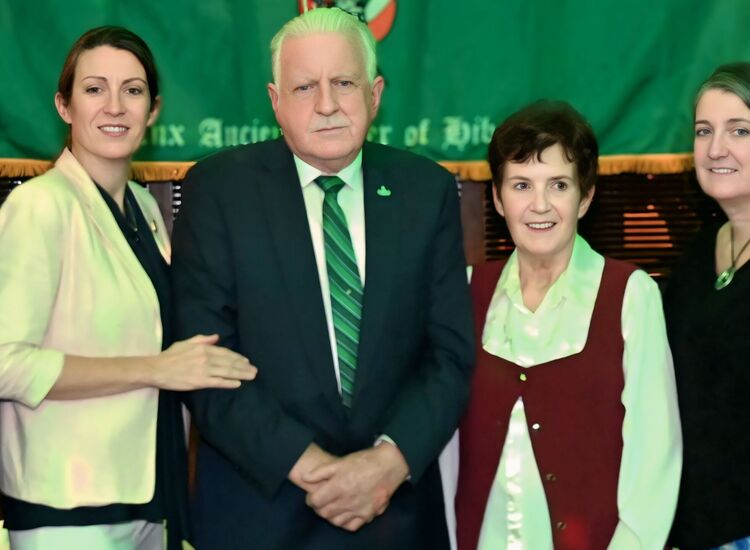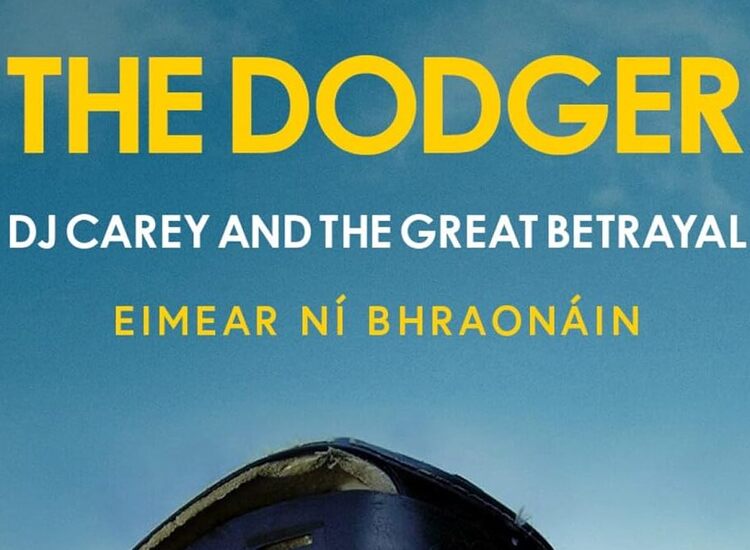By Daniel Neely
Dan Milner is a name surely familiar to much of the Echo’s readership. Among many other things, he was a founding member of the band the Flying Cloud (the house band at the famed Eagle Tavern), he published the important song collection “The Bonnie Bunch of Roses,” and he’s recorded several notable solo albums, including “Irish Ballads and Songs of the Sea” and his most recent two "Irish Pirate Ballads and Other Songs of the Sea” (2009) and “Civil War Naval Songs” (2011), both for Smithsonian Folkways. An engaging performer, he is widely recognized at one of Irish America’s premier song collectors and authorities on the Irish song tradition.
Milner, who recently finished a PhD at the University of Birmingham in England, has added to this formidable legacy with a new book, “The Unstoppable Irish: Songs and Integration of the New York Irish, 1783-1883,” published by the University of Notre Dame Press. It is an excellent, well-researched work that tells a fascinating story about the early Irish Catholic experience in America.
The book’s focus is the historical period that begins with the 1783 evacuation of British forces following the American Revolution and ends with the conclusion of William R. Grace’s, NYC’s first Catholic mayor’s, first term in office. Within that frame, Milner tells a very specific story about the changing fortunes of Irish Catholics in New York. In doing so, he makes the point that Irish Catholics integrated, i.e. they “came into common and equal membership” in New York rather than assimilated, or “adopted the culture of the larger host group.” A much maligned group early on, their fortunes changed over time. By the end of the period of study, New York’s Irish, which had earned new political agency and had become a significant percentage of the City’s population, began to be seen in important new ways, making them, as Milner contends, “unstoppable.”
The way Milner traces this history is fascinating. Rather than relying solely on dry sources like archival newspapers and secondary scholarship, he incorporates song texts – folk songs, street songs, and early variety theater lyrics, all taken from period sources such as broadsides, songsters, and published songs – to create a deeper and more nuanced reading of the Irish Catholic experience. It’s an effective approach that becomes more relevant in the book’s context: as the Irish wove themselves more fully into the fabric of New York, the more and increasingly diverse song texts there were that emerged.
The book is divided into five chapters, each looking at a different historical moment and circumstance. Chapter one, “Prologue: Colonial New York,” explores the Irish in New York before 1783 and paints a fairly bleak picture for potential integration. It includes few song texts, but a couple of interesting examples that illustrate the fraught relationship the Irish had with a nascent America. “The New York Irish in the New Republic,” the book’s second chapter, looks at the Irish experience after the revolution. During this time, being Protestant was seen as a prerequisite for being “American,” and as seeds of nativism begin to sprout, a friction between the working class and aristocracy began developing that had later implications. However, as the Irish Catholic community begins to take firmer root with the establishment of the first Catholic parish, the arrival of United Irish refugees, and a subsequent rise in Irish immigration, things began to change. Here, Milner introduce a larger number of song texts to illustrate the moment’s tensions (see, for example, his interesting analysis of the song “Johnny Doyle”) and explore some of the Irish stereotypes that began to take root. “Irish Famine and American Nativism” examines how the Great Hunger and the Second Great Awakening affected Irish America, a time when immigration increased exponentially. Song lyrics from this time are well documented but Milner has done his due diligence to find some deep cuts and to do some interesting comparative work between songs published both in Ireland and America that illustrate the plight of what he refers to as this “desperately besieged ethno-religious minority.”
“The Civil War and the Draft Riots of 1863” is a chapter all about the opportunity for equality through war. Milner digs into the sensibilities of the moment head-on and explores them using a bounty of song lyrics. Here, we see an expansion in song types, with popular songs taking a more active role. The book’s final chapter, “The Road to Respectability,” sees a more integrated Irish Catholic community through political transformation (as Boss Tweed and Tammany Hall politics give in to Mayor Grace’s first administration) but also cultural transformation as well (as native-born Irish Americans begin to outnumber those born abroad).
One of the things that recommends Milner’s approach is how judiciously he uses song texts. The examples Milner cites to complement his historical writing are detailed and insightful, revealing an extremely meticulous approach to research that takes into account the various limitations song lyrics have in this sort of work. However, the key thing that recommends this book to a general readership is Milner’s clear prose and keen sense of the bigger picture. Despite being a detailed and on-point work of history, the book never at any point feels obscure. The history Milner writes is compelling and is given depth by contemporary voices in an inventive and engaging way.
“The Unstoppable Irish” is an excellent book. Milner is an insightful writer who communicates Irish America’s history and its many nuances well. This book will resonate with anyone interested in what makes Irish America and for this reason, it comes recommended without reservation. However, “The Unstoppable Irish” is also a book for our times. While Irish-American Catholics will have an intuitive sense of the struggles about which Milner writes, understanding the human experiences from a period perspective with the aid of song lyrics not only speaks to the Irish Catholic experience, but indeed that of any immigrant group, past or present, which gives it contemporary relevance beyond the Irish community. One to check out! “The Unstoppable Irish” is available in hardcover and paperback from the usual online retailers and wherever fine books are sold. It is also available from Amazon as a Kindle e-book. For more info, visit undpress.nd.edu.








